Sewol disaster ferry raised in South Korea after three years
- Published
The government has bowed to pressure to raise the 6,825 tonne vessel (there is no sound on this video)
A ferry has been raised from the sea bed, three years after it sank in one of South Korea's deadliest disasters.
The Sewol sank off the south-western island of Jindo on 16 April 2014 killing 304 people, almost all school children on a trip.
It has been winched to the surface so a platform can be inserted under it for it to be towed ashore.
It is expected to arrive at port in less than two weeks, where it will be met by the families of victims.
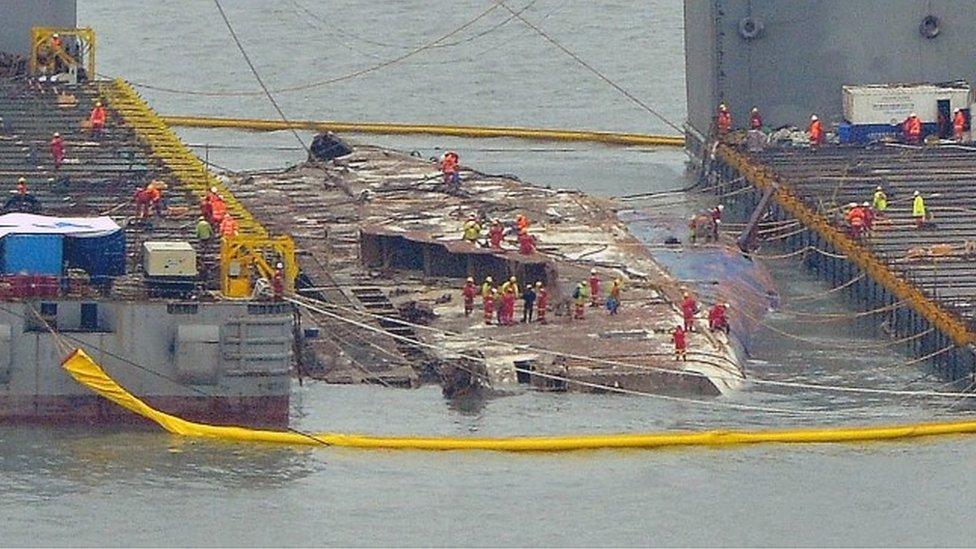
Raising the vessel was one of the key demands of the families of the victims
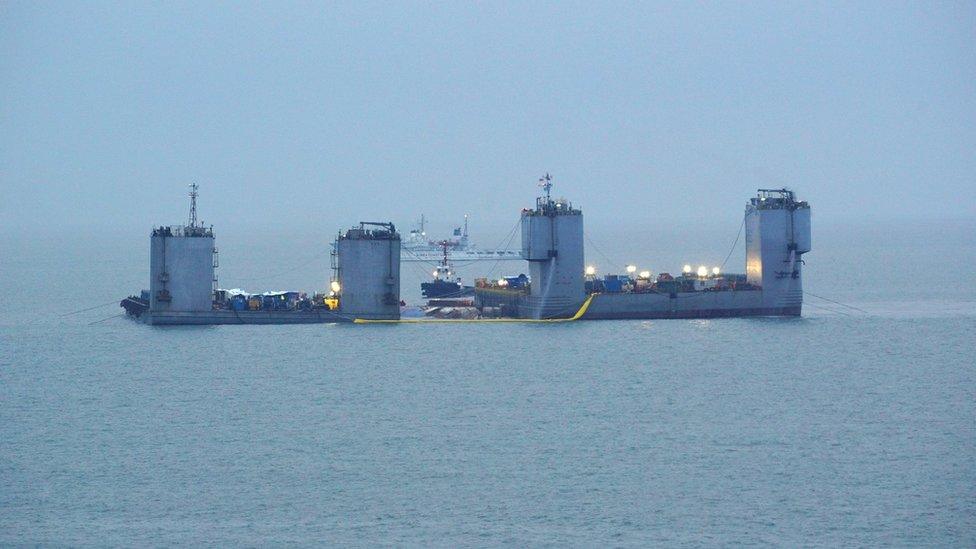
The complex operation is one of the largest ever attempted
The bodies of nine victims are believed to still be trapped inside the sunken ship, and raising it was one of the central demands of their families.
The government bowed to pressure to raise the 6,825 tonne vessel, one of the most complex operations ever attempted, said the the BBC's Stephen Evans on Jindo Island.
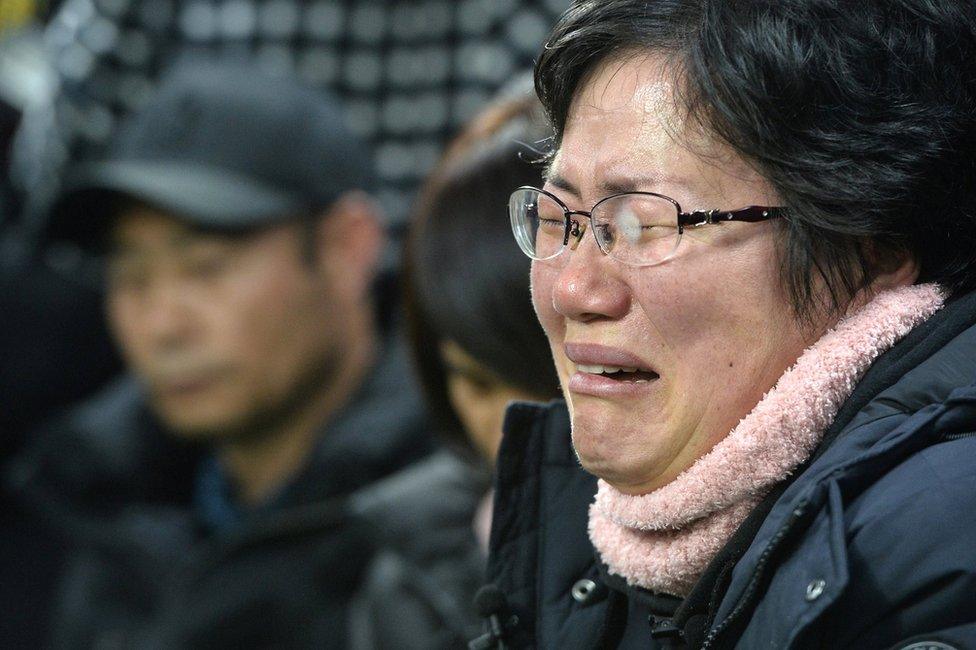
Relatives of the victims watched the salvage operation off the Jindo island
The 16-year-old daughter of Huh Hong-Hwan was one victim whose remains were never found.
"To see the Sewol again, I can't describe how I'm feeling right now," Mr Huh told the AFP news agency as he watched the raising of the ship from a boat nearby.

Hundreds of workers in a Chinese salvage team were involved in the raising
The sinking was blamed on a combination of illegal redesigns, cargo overloading, the inexperience of the crew member steering the vessel, and lax government regulations. The ship's captain was later convicted of murder.
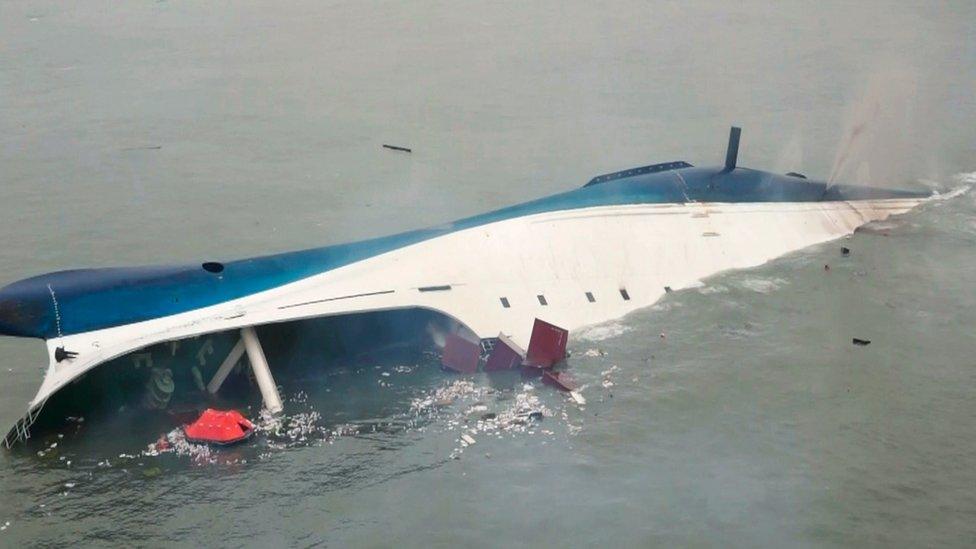
Former President Park Geun-hye came under intense pressure over the sinking at the time
Anger over the response of the authorities after the disaster contributed to the unpopularity of former President Park Geun-hye, who was recently ousted.
- Published13 June 2016
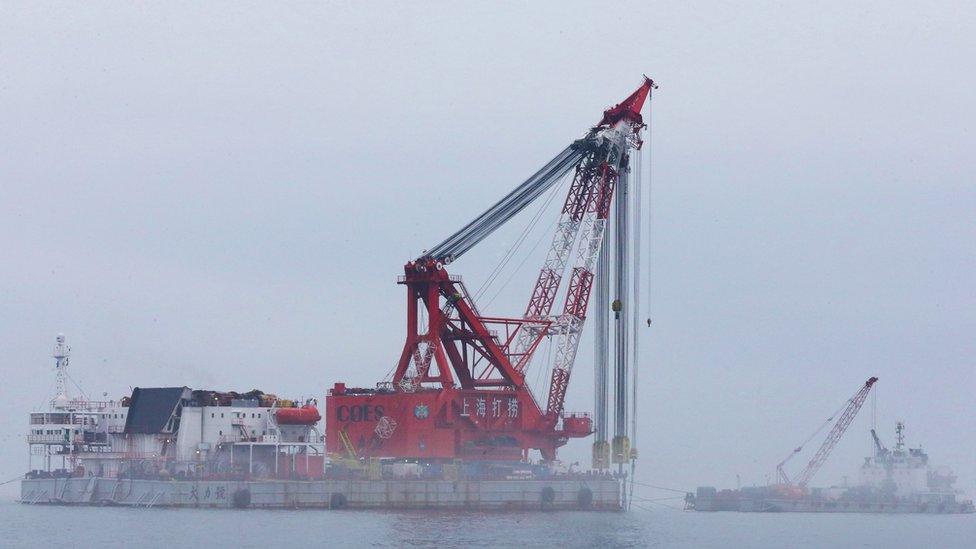
- Published28 April 2015

- Published11 November 2014
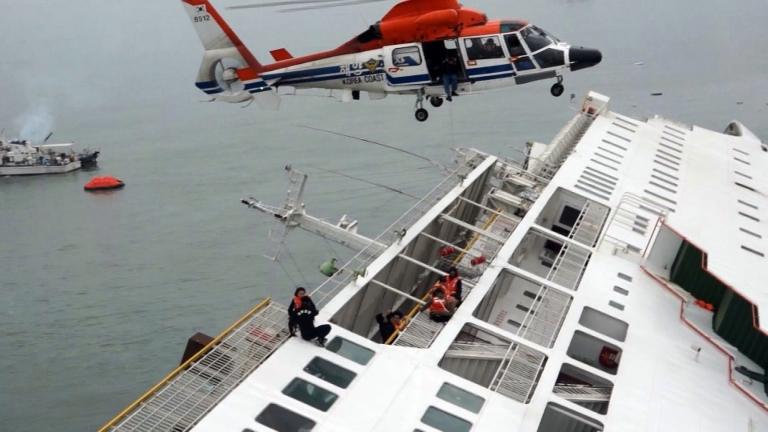
- Published17 April 2014
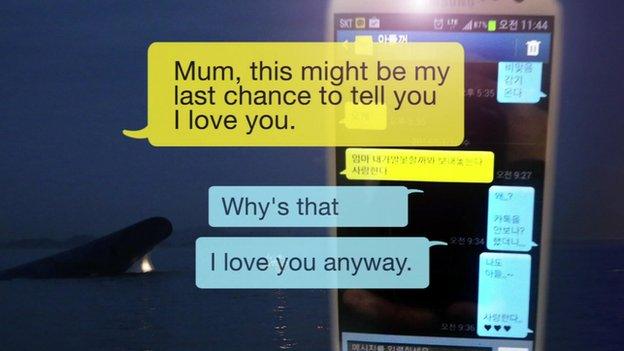
- Published16 April 2014